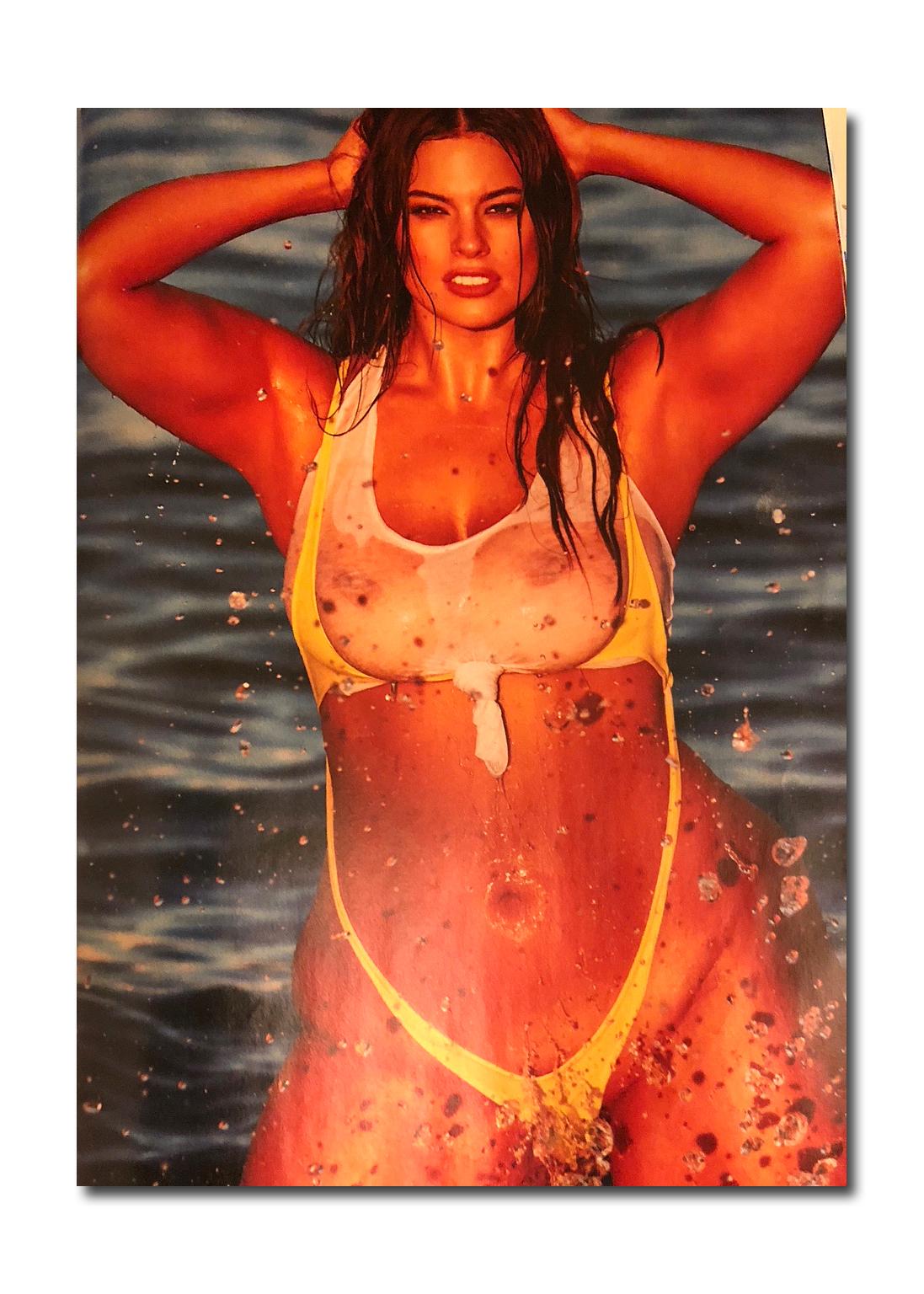 |
| Click images for full size views |
Sports Illustrated (SI) came out with its controversial stand-alone 2018 swimsuit issue this past Thursday which features black and white nudes of models describing themselves in words written on their bodies. The all female crew taking the photos were heralded by the Sports Illustrated staff as being part of the sweeping “me too” movement which has gained traction and produced much needed changes to an industry rife with abuse. Unfortunately, having dozens of women appear naked or in pornographic poses doesn’t seem like a step forward.
 |
| Lais Ribeiro |
Certainly, these models are more representative of the general population than Victoria’s Secret, as some are size 12 and up and that should be applauded; however, the objectification of women is more glaring than ever in this overtly sexual issue. The first page of the magazine features the Kardashians in Calvin Klein underwear; hardly an aspirational group for teenage girls and boys who are looking to see role models such as Aly Raisman and Genie Bouchard. This magazine should be rated as “not suitable for anyone under the age of 18” as page after page displays women with their legs splayed and their boobs displayed with only a string or a finger covering their nipples. Is this what modern day modesty looks like?
 |
| Olivia Culpo |
Putting an African American Danielle Herrington on the cover, joining Beyonce and Tyra Banks, as only the third ever, is great but are these plastic surgery altered women really the face of the population. The first swimsuit issue debuted in 1964 as a five-page supplement featuring Babette March in a modest white two-piece. Since becoming a separate issue it has launched the careers of Elle Macpherson, Christie Brinkley, Cheryl Tiegs, Tyra Banks, Kathy Ireland, Paulina Porizkova and more recently Kate Upton to stratospheric heights. The Elle Macpherson cover will be etched in the memory of thousands of teenage boys for decades.
 |
| Kate Upton |
Being placed on the cover is no longer as consequential as manifested by cover girl Herrington’s paltry 104,000 Instagram followers. However, the annual issue remains a money making machine bringing in more than $1 billion in Revenue since being sold separately in 1997. To pretend it is anything other than a commercial endeavor is dishonest. Nearly every page features an advertisement for something whether it’s Aruba, where the shoot took place, or the bikinis and jewelry the girls are wearing.
 |
| Hunter McGrady |
While the issue seems to promote being healthy and loving your body it was ironic to see a cigarette advertisement for “Natural American Spirit” which it says “are no safer than other cigarettes.” Editor MJ Day, a 20 year veteran of SI, wrote an Editor’s Letter, perhaps anticipating the outrage the magazine would elicit, with justification after justification claiming, “beauty comes in all forms… A key theme this year is Swimsuit’s power as a platform for the voices and messages of the bold, diverse and yes stunning women we feature.” Another theme she espoused was “a woman does not have to be modest in order to be respected. There is beauty in not holding back.”
 |
| Olivia Culpo |
According to Day, writhing around in barely there bikinis while millions of men glare at your picture while their wives stand idly by is a new form of feminism. The negative impact of all this nudity on young teenage girls who are being bombarded by images of the Kardashians on a daily basis is cringe worthy. There are so many beautiful women in the issue but their messages get lost in the pornography.
 |
| Ashley Graham |
What better role model than Brenna Huckaby a paralympic snowboarder who is also a cancer survivor and mother who graces the pages in a sexy yet relatively demure swimsuit that truly shows beauty comes in all forms. Aly Raisman a three-time Olympic gymnastics gold medalist who recently spoke out against her abuser is another heroine; yet even she looks cheap appearing naked with a “Survivor” sign on her chest. Ashley Graham, another plus-sized role model shows her nipples in a yellow bikini that had me sighing in disappointment.
Moreover, most of the women featured have breast implants, and surgically altered faces hardly representative of the “diverse and bold” general population. There is nothing wrong with making money by showing nearly naked women; however, when it is done under the auspices of empowerment it sends a dangerous message.
– Lieba Nesis


